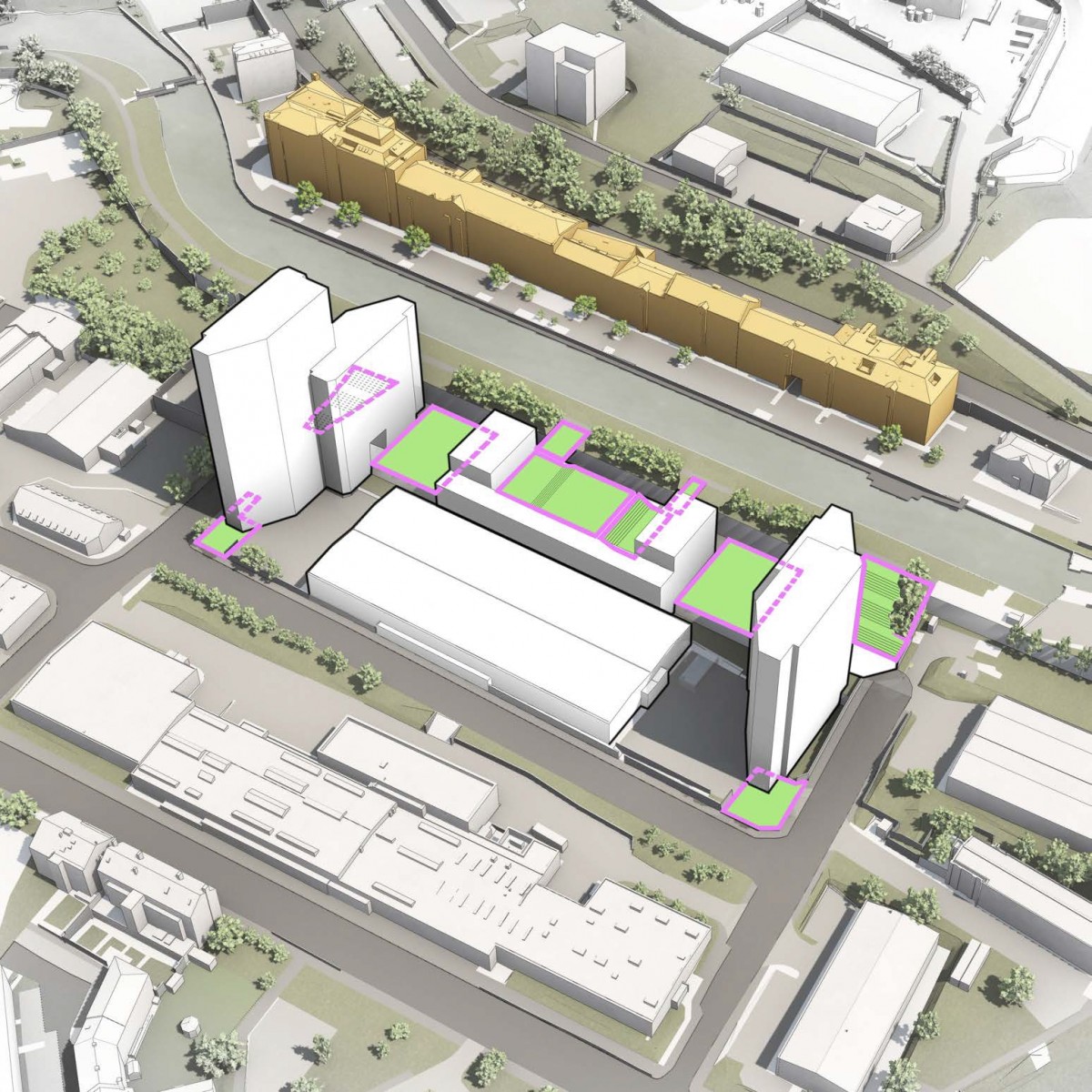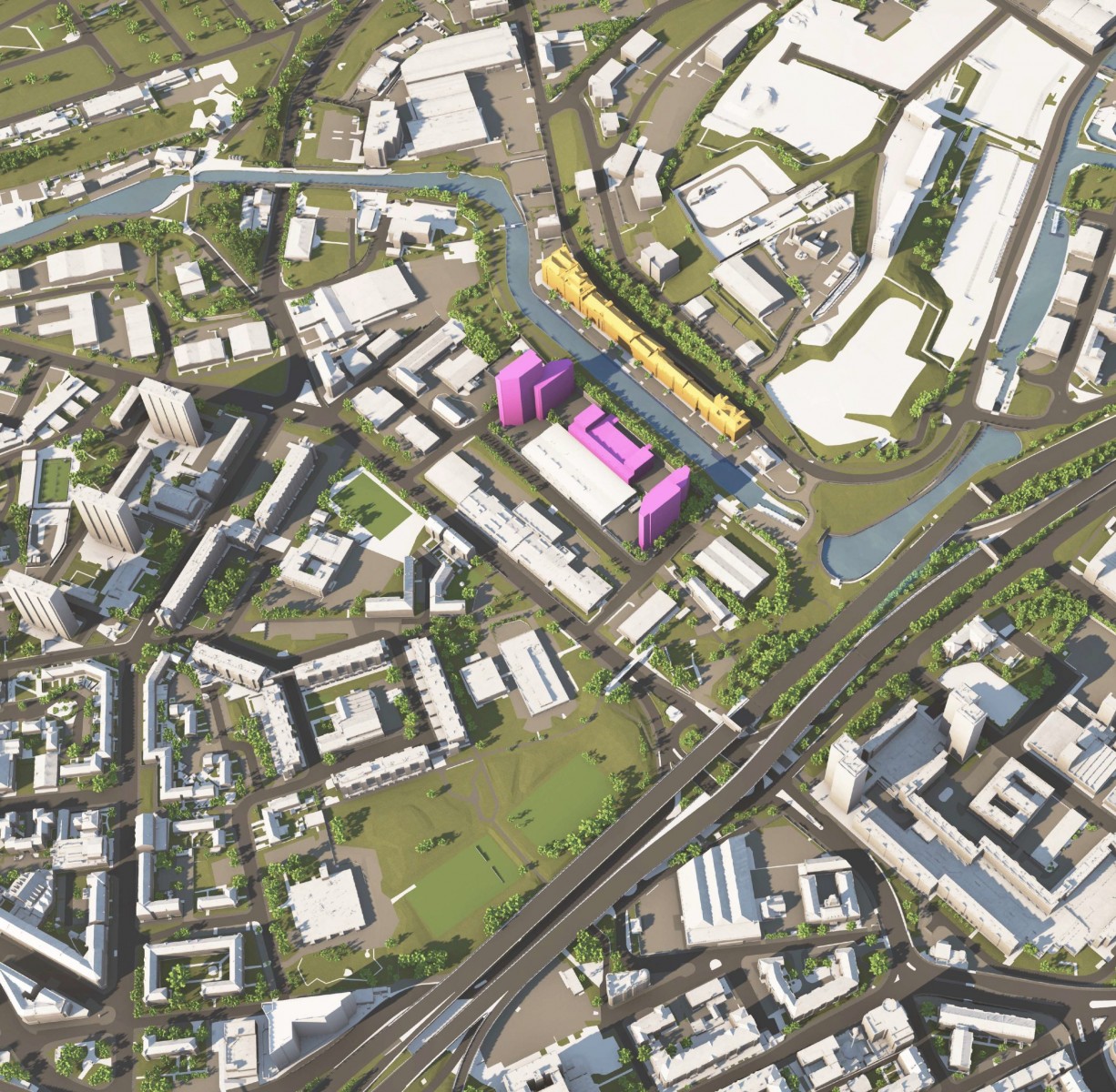Scottish Opera unveils Speirs Wharf regeneration plan

Scottish Opera has revealed new plans to transform Glasgow’s Speirs Wharf area with a mixed-use development including student accommodation and rehearsal/performance and film facilities.
Consultation is underway over the New Rotterdam Wharf project which is intended to bring together five different premises under one roof, flanking the national opera company’s production studios at Erdington Street.
Under the plans, the performing arts company would relocate its head office from Charing Cross to a new HQ with an education and outreach hub that would have adaptable performance spaces that double as a recording studio.
The mixed-use development would provide music rehearsal and performance spaces and film facilities, general industrial and office and production space plus two student accommodation blocks.
Also listed on the pre-application notice are residential accommodation; retail and professional services, food and drink uses, non-residential institution uses and assembly and leisure, plus demolition, associated landscaping, public realm, access and infrastructure work.
The consultation website stated: “We wish to advance our ambition to remain in, and reaffirm our commitment to, Glasgow. This proposed development would help to secure Scottish Opera’s presence within Glasgow for the next 60-plus years by rationalising and consolidating three of our current scattered five premises under one roof to demonstrate measurable economic, business, and artistic advantage.
“Our current premises include our rented HQ in the ageing Victorian building at 39 Elmbank Crescent, Charing Cross, Glasgow, and a large orchestra rehearsal space out at Hillington Park, Renfrewshire on a short-term lease.
“Edington Street production studios are the only integrated manufacturing and rehearsal facility in Scotland. It is the workspace for many highly skilled artisans.
“Bespoke sets, props, costumes and wigs are made for each production alongside teams of specialist stage managers, lighting and stage technology technicians.
“The studios host orchestral players and singers from around the world for rehearsals. They are also the hub for a huge national education and outreach programme.
“The opportunity presented at New Rotterdam Wharf is to transform a single-sided ‘industrial estate’ plot into a mixed-use vibrant urban block, activated on all sides with new cultural, student use and commercial opportunity, all crucially connecting with the western tow-path of the Forth and Clyde Canal, bringing life and vitality to this amazing city centre asset.

Online consultation documentation also states: “The development strategy that has evolved for the site is to place the proposed new Scottish Opera rehearsal and support building between the existing Edington Street production studios and the canal towpath.
“A core circulation route through this new building will link a new canal-side entrance down into the existing production studio and to the existing entrance on Edington Street.
“To the north and south, two student accommodation blocks are proposed, with stepping scales, effectively ‘book-ending’ the site and providing activated frontages to all four corners of the plot.
“Pended access under each block provides access to two internal courtyards providing service and visitor access to the Scottish Opera building.
“New broad feature steps at both the north and south ends of the site provide connection between the ends of Sawmillfield St and Corn Street, connecting up to the canal edge.”
The scale of the new Scottish Opera part of the complex has been kept to a minimum, with the bulk tucked below the level of the canal towpath, although two pavilion buildings are proposed to rise two storeys above towpath level, reaching the approximate height of the existing treeline along the canal.
The statement continues: “At the heart of the proposed development is the desire to provide better, more usable public space which can help to activate this part of the city — especially at this section of the Forth and Clyde canal.
“It is believed that this part of the canal could be improved and reactivated with outdoor spaces that are more attractive, more varied and more flexible for public activity.
“Positive placemaking is integral to the proposed development, and the shaping of each massing block has been driven by how we can create great public space in between each block and at the key corners of the site.
“These public spaces are being developed to allow for a wide variety of uses and activities – by Scottish Opera, students, local residents and members of the public.”
Scottish Opera said it plans to submit a planning application in early 2024 with the hope that construction could begin in early 2025.





















